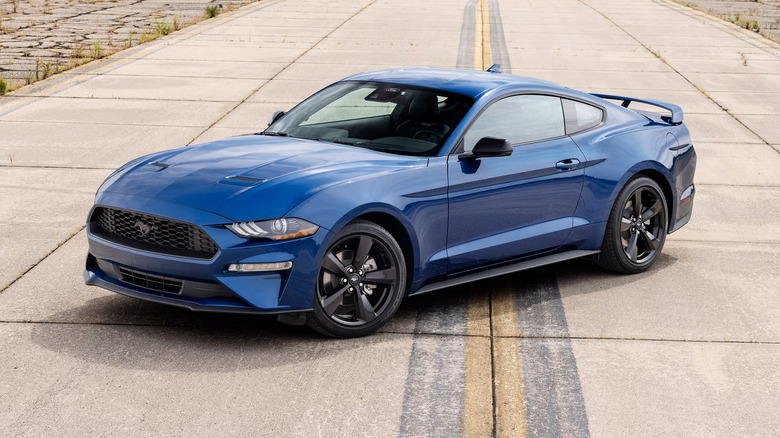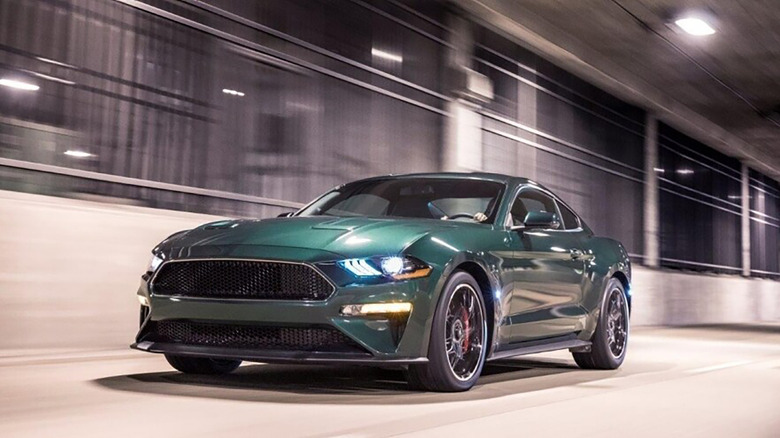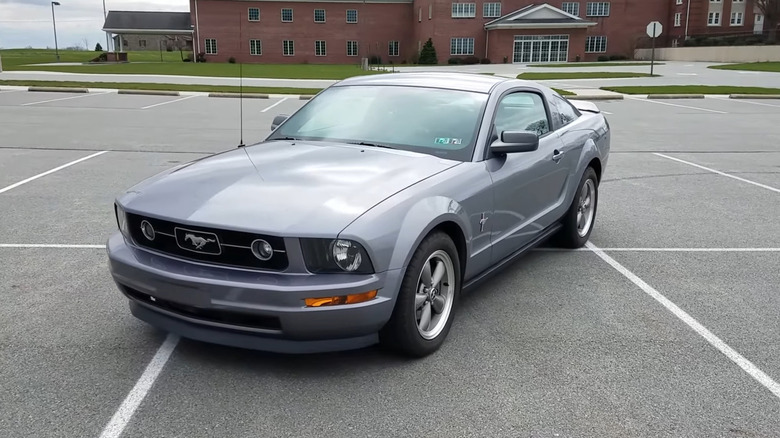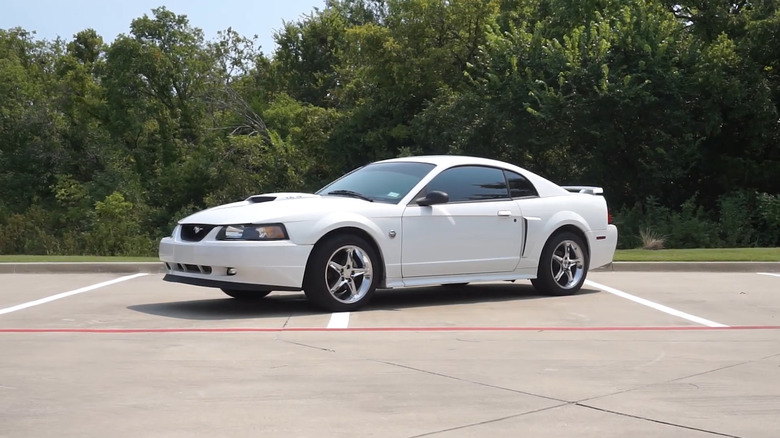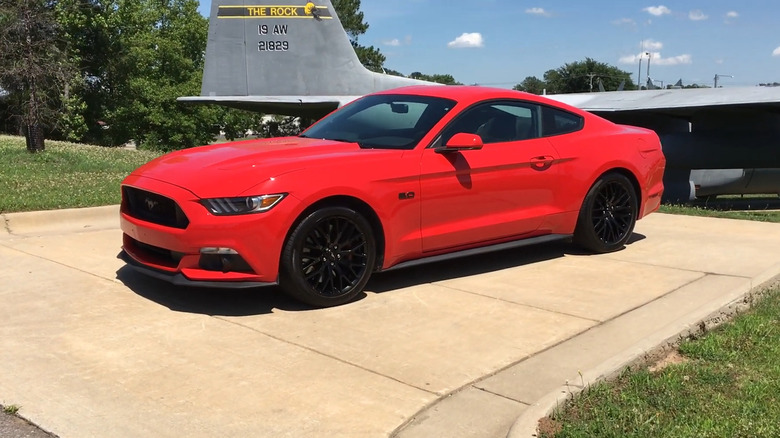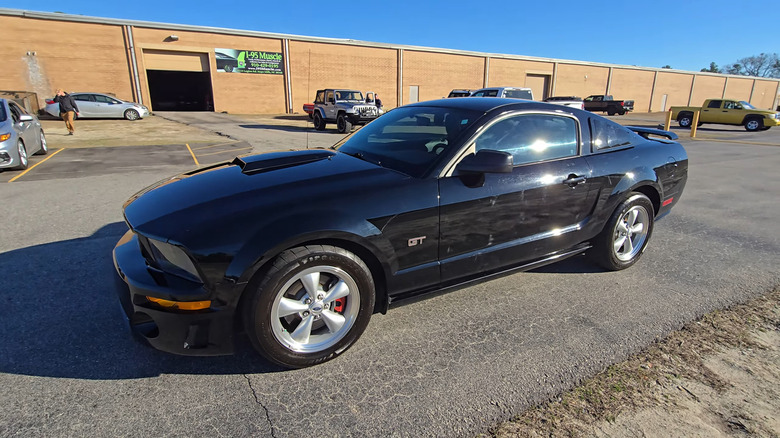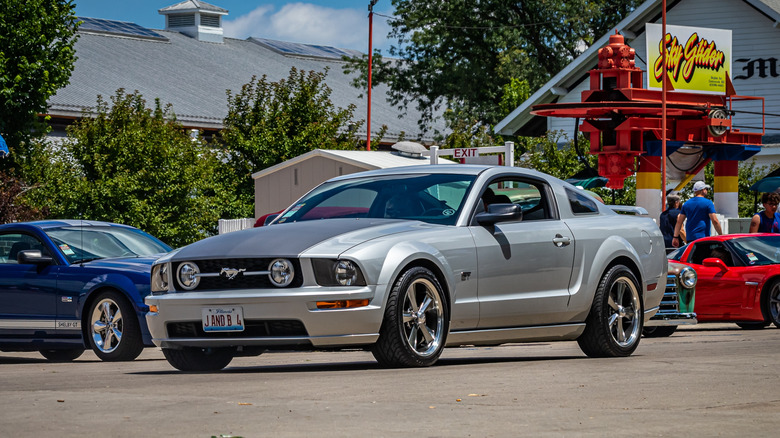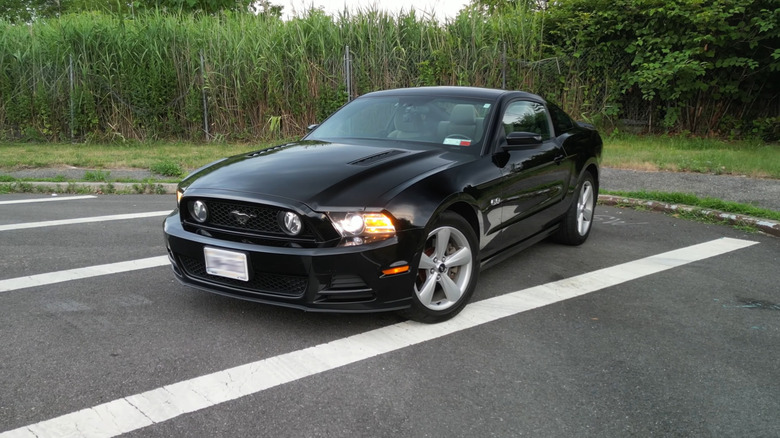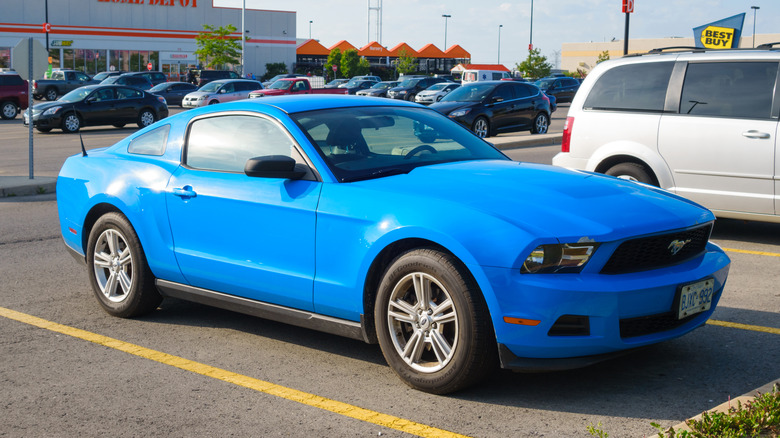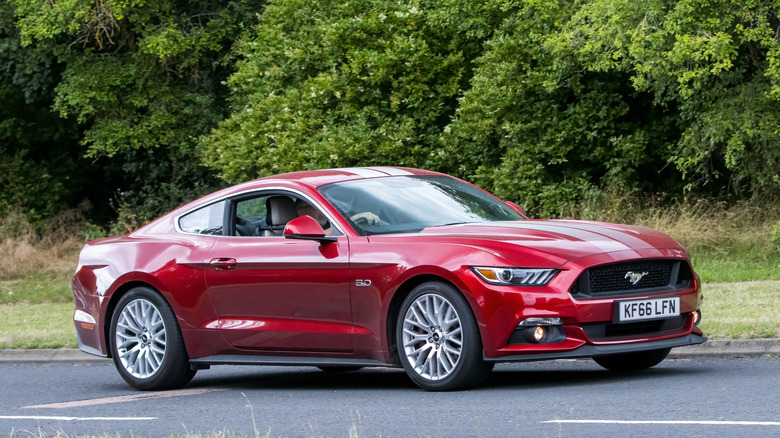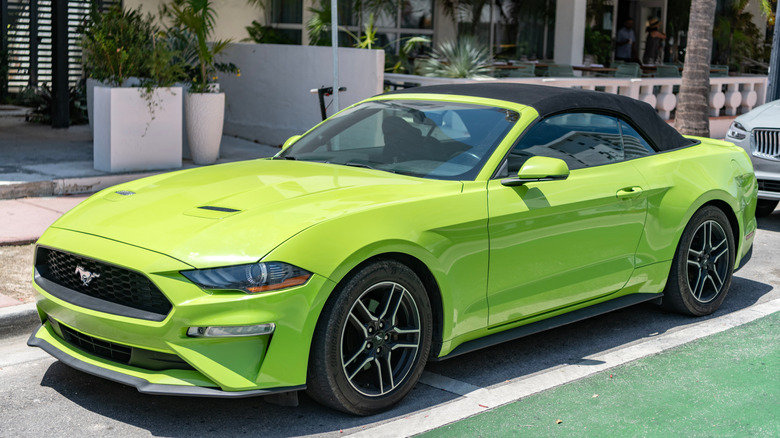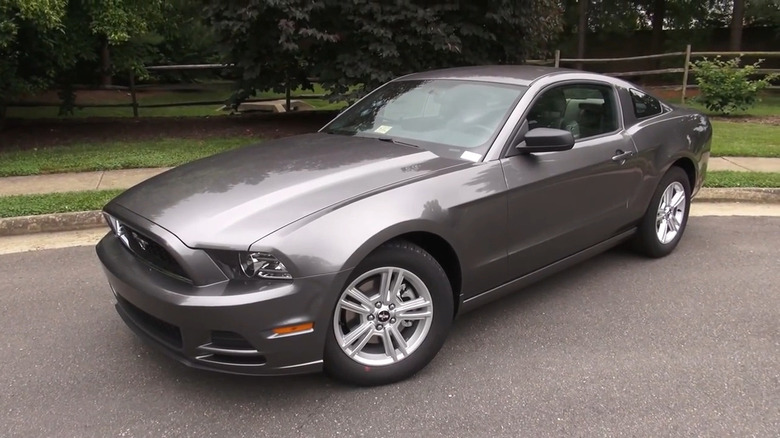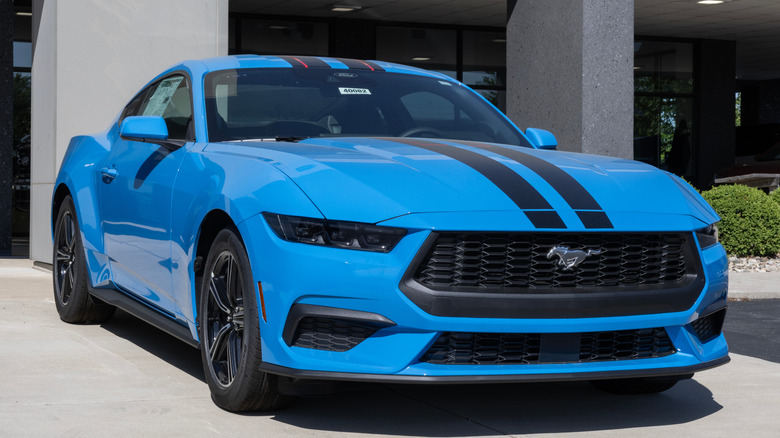8 Of The Most Reliable Ford Mustang Years, And 5 To Avoid (According To Owners)
It may have gone through its fair share of changes since its 1965 debut, but over the decades the Ford Mustang has turned out some iconic pieces of American automotive history. Bridging the gap between the brutes of the muscle scene and the more subdued, yet well-balanced sports cars, it's easy to see why this remained such a popular car, now being one of the last in its segment. However, if you'd rather save some money compared to the all-new 2025 EcoBoost model, choosing which one to buy can be tricky.
More so than ever, reliability is incredibly important when looking for a new car. Compared to some other nameplates, the Mustang has a decent track record when it comes to the all-important area, but there are still certain years that have proved difficult for owners that should be noted. Here's a closer look at the best Ford Mustangs to buy when it comes to reliability, and ones that should be examined with more care or even avoided altogether.
Best: 2019 Ford Mustang
One of the highest-rated Ford Mustang models has all the potential to still feel like a relatively new car, if you find one that's been taken care of over the years. The 2019 Mustang was released off the back of the refreshed 2018 model — still part of the sixth generation of the pony car, but not short of further updates throughout. You had two options for the engine under the hood in 2019, with the base engine being a 2.3-line inline-four producing 310 hp and 350 lb-ft of torque. If you wanted more power, the GT trim's 5.0-liter V8 engine increases the output to a potent 460 hp, which is pushed even higher to 480 hp in the limited Bullitt model.
Outside of its performance, there aren't many owners who have anything negative to say about their experience owning a 2019 Mustang. According to reviews on Cars.com, you can expect solid reliability and comfort inside the car, at least as far as coupes go in that regard. Some owners do report some cheap-feeling materials in some areas, but not to an extent that should put you off it completely. Looking at pricing for the 2019 model, KBB gives the base trim an average price of $16,636 and $26,310 for the GT, with the Bullitt trim fetching around $32,796 at the time of writing.
Avoid: 2006 Ford Mustang
Going back to the mid-2000s is very hit and miss with the Mustang, with the 2006 model unfortunately being one of the misses, according to owners of the vehicle. For the 2005 model year, Ford rolled out the fifth generation, which had a relatively successful launch. A few complaints have been made over the years for the 2005 Mustang, but nowhere near as many as the 2006 model the following year. The base model did come with solid performance for its time, producing 210 hp and 240 lb-ft of torque from its 4.0-liter V8 engine. Elsewhere, however, some owners report a variety of issues.
Common complaints that owners reported on CarComplaints.com are mostly to do with the build quality, particularly with the exterior paint. Both bubbling and peeling look to be a major cause for concern with the 2006 Mustang, which, while not something that'll keep it off the road, can still become annoying to say the least. Regarding mechanical faults that may, in fact, keep it off the road, however, some owners reported their car going into limp mode, thermostat housing cracks, as well as the rear differential bearings wearing off over time. The NHSTA currently has 572 complaints for the specific model, with the Takata airbags still being an issue in the 2006 Mustang. It's crucial to make sure that the model you own or are considering has had the airbags replaced.
Best: 2004 Ford Mustang
Before the 2005 model year was introduced with its new face, the Mustang nameplate was carried by a much different-looking car. With the fourth-generation Mustang being introduced in 1994 to replace the not-so-popular Foxbody generation that Ford carried through the '80s, the iconic muscle car took on a much more modern, sleeker design, known as the SN95 bodystyle. This Mustang was in production for 10 years, with the final 2004 model being lauded by owners across multiple key areas. By the end of its run, you got a 190-hp 3.9-liter V6, going all the way up to the 4.6-liter supercharged V8 under the hood of the SVT Cobra, producing 390 hp and 390 lb-ft of torque.
With over 100 reviews listed on Cars.com, 97% of owners say they would recommend buying a 2004 Ford Mustang. If interior space and comfort are the most important areas for you, the SN95 models aren't quite on par with some of the later generations, but still offer a sizable amount for a pony car. Reliability is one of the strong points for the 2004 Mustang, as is the overall value that owners feel they get out of it. According to KBB, the base trim goes for as little as $4,326 on the used market, with the most powerful SVT Cobra sitting at $17,731 in its coupe guise.
Best: 2015 Ford Mustang
Just over 10 years after the discontinuation of the SN95 Mustang, the sixth-generation model was introduced, building on the much bulkier, aggressive styling that the fifth-gen models brought back. The 2015 Mustang was notably wider and lower, but at launch, the base engine option remained the same as its predecessor. This wasn't a bad thing — you still get a power output of 300 hp and 280 lb-ft of torque from the 3.7-liter V6. Another engine carried over was the 5.0-liter Coyote V8, producing a higher 435 hp and 400 lb-ft of torque if power comes before all else. And if you're in the market for a Mustang, it probably does.
The V6 trim came with a price tag of $25,895 on release, but sits at a national average of $13,159 on the used market, according to KBB. For the V8, you'll need to spend around $21,395 for the GT. Only replaced with the current Mustang last year, the 2015 model most definitely still holds up when it comes to looks. Multiple owners refer to this specific model as the best car they've ever owned, with its performance and exterior being two of the strong points on average from all the reviews collected by Cars.com. Reliability also shouldn't be too much of an issue, with proper maintenance, of course.
Avoid: 2007 Ford Mustang
The fifth-generation models in the late 2000s deserve massive amounts of credit for recapturing the spirit of the late '60s and early '70s, but, as is the case with the 2006 model, this generation faced its fair share of annoyances early on in its production run. Under the hood for 2007, the power units unsurprisingly stayed the same, with the base model putting a 4.0-liter V6 to good use, producing 210 hp and 240 lb-ft of torque. Yet again, the engine shouldn't be a major pain point for the 2007 model, instead being a pretty sturdy engine overall.
Unfortunately, however, the build quality drops the bar lower. Out of all areas, paint blistering is one of the most common complaints that owners have with their 2007 Mustang. It's not just the paint causing issues, though, with a few reports of water leaking into the interior. Also, be sure to check that the climate control system is working as intended if you find a 2007 model that catches your attention. Another similarity with the 2006 model is that Takata's airbags were also used in 2007. Despite multiple recalls regarding them, is worth checking to make sure they've been replaced.
Best: 2008 Ford Mustang
If you want a fifth-generation Mustang from the late 2000s to save some extra money compared to those released in the 2010s, the 2008 model year looks to be one of your best bets. We've covered how the 2006 and 2007 models have frequent reports of exterior paint issues, which, while not fixed all of a sudden for this Mustang, isn't as common a complaint among owners. All the core components from the previous fifth-gen years were carried over, with the 210-hp 4.0-liter V6 remaining as the base engine option in the Deluxe trim. According to KBB, you can pick one up for around $5,711 on average. The cheapest V8-equipped model comes in at $10,217, topping out at $19,324 for the top-spec Shelby GT500.
Looking at the consumer reviews collected by Cars.com, the 2008 Mustang edges out the surrounding model years with a score of 4.7 out of five overall. No matter which model they went for, owners often give the 2008 model a shining review, with comfort, reliability, and unsurprisingly performance being where the real strengths lie for the car.
Best: 2013 Ford Mustang
The S197 models ran from the 2005 model year until 2014, but not without some significant changes along the way. In 2010, Ford introduced a major facelift for the Mustang, which kept the fundamental design of the pre-facelift models but added plenty of visual interest through an updated, minimal front fascia and smoother, more defined lines throughout the rest of the car. The brand wasn't done there, however, updating the pony car for a final time with the S197 run in 2013. You got a grille inspired by the GT500 models, and according to owners, it's one of the best Mustangs you can buy.
Under the steel bodywork sits the same engine you got in the previous model year Mustang, that being a 3.7-liter V6 producing 305 hp and 280 lb-ft of torque. A V8 was an option, of course, with the updated 5.0-liter Coyote putting down 420 hp and 390 lb-ft of torque. Besides the performance, reliability is one of the standout selling points among owners, as is its everyday usability. Don't expect it to be a fuel saver.
Worst: 2010 Ford Mustang
While the latest iteration of the S197 Mustang is a fan favorite, the previous and more significant refresh got off to a rougher start. While not a fundamental issue with the car, the 2010 model was the last to come with the 4.0-liter V6 engine of the generation, giving it less power than the 2011 Mustang through to the last 2014 model. With an output of 210 hp, Ford's pony wasn't exactly giving drivers the sort of modern thrill they'd expect from a car whose legacy is built on performance, making the latter models a better option to get almost 100 horsepower more as standard.
Regarding the mechanical faults that most commonly show up on these cars, the wearing of the outer tie rod ends is one of the top complaints by owners, per RepairPal. This shouldn't be too expensive a fix, but still a hassle to deal with. Build quality also affects the Mustang yet again for 2010, with corrosion on the hood of the car prompting either a simple respray or the entire panel having to be replaced.
Best: 2002 Ford Mustang
If you want to maximize your savings but still want to experience the feeling that only a Mustang can really give, turning back the clock to the start of the century has its options. Specifically, the 2002 model year remains one of the best choices on a budget. It's safe to say that it won't be able to match any of the newer Mustangs on this list, aside from the 2004 model that has the same engine. The 3.8-liter V6 also comes as standard under the hood of the 2002 Mustang, producing 193 hp and 220 lb-ft of torque. Not exactly jaw-dropping, but not bad for an average used price tag of $3,641.
Some owners do report issues with paint peeling, but nowhere near the extent of the 2006 and 2007 models. Releasing towards the end of the SN95's run, Ford looked to have ironed out the problems that could be fixed, with the 2002 model receiving an average score of 4.8 out of five when it comes to reliability per owner reviews on Cars.com. Again, on-paper performance isn't a strong point for this generation of Mustang, but that doesn't stop owners from enjoying the car on a day-to-day basis.
Best: 2017 Ford Mustang
While other generations struggled to get off the start line, the S550 generation hardly ran into any major problems that still plague owners today. Almost all of the sixth-generation models shouldn't cause any major issues, but the 2017 model stands out with 97% of 299 owners recommending the car on Cars.com. Compared to the first S550 model in 2017, you won't see any major differences between them, aside from finding a good deal on the used market with fewer miles on the clock and improved reliability. According to KBB, you can pick up a used 2017 Mustang for around $15,584, down from its $27,280 original MSRP.
Under the hood, you again get the same 3.7-liter V6, producing 300 hp and 280 lb-ft of torque. The 2017 model year was the last of this V6, promoting the EcoBoost to the primary choice for the following S550 years. This engine was also available for the 2017 model, and with 10 extra horsepower, may well be the better choice with its slightly better efficiency rating of 24 mpg combined. With one of the highest average reliability scores of the generation as well, the 2017 model is well worth the slightly higher used price tag.
Avoid: 2012 Ford Mustang
Among all the S197 models, the 2012 Ford Mustang is frequently cited as one of the most troublesome. The last of the pre-2013 facelift models, problems with hood corrosion are also present for the 2012 model year, not exactly helping the nameplates score in this department. As per CarComplaints.com, paint peeling is another key problem owners have recorded with their cars, but not to the same extent as the corrosion issues.
Under the hood of the 2012 Mustang was the 3.7-liter V6 producing 305 hp and 280 lb-ft of torque. While the engine wasn't the root cause of one major problem, cars fitted with the automatic transmission available this model year are noted to slip into first gear without any input, causing the wheels to lock and lose control. A recall did happen in 2016 to rectify the problem, but some recent complaints listed on the NHSTA still call out erratic gear changes with their Mustangs.
Best: 2020 Ford Mustang
For the 2020 model year, Ford didn't introduce any major updates outside of the usual cosmetic packages for the Mustang, but it did offer an optional upgrade that gave the 2.3-liter EcoBoost inline-four engine even more of a punch. This was simply called the High Performance package for an extra $1,995 on release. The Mustang now produced 330 hp instead of the base 310 hp, with torque levels staying at 350 lb-ft. More performance is only one thing that owners of the 2020 model are fans of, however.
Reported issues are expectedly much lower than older models, as it hasn't had as much time to be put to long-term tests. But so far, as is the case for most of the S550 Mustangs, the 2020 model gets a lot of praise for its reliability instead of complaints. Upon its release, the base MSRP came in at $29,460, but the base trim can now be picked up for around $18,188, according to KBB.
Avoid: 2014 Ford Mustang
The final Ford Mustang on this list that we would recommend taking caution with is the last of the S197s, the 2014 model year. The fifth generation's send-off came with the facelift that was introduced the year prior, which is a model year that hasn't collected quite as many complaints as its successor. Unfortunately, paint bubbling emerges as the most common issue, according to CarComplaints.com, with water leakages also being reported by owners on the site, as well as by the National Highway Traffic Safety Administration (NHTSA).
Like the 2012 model, the 2014 Mustang is another one that's affected by transmission issues, including the issue of shifting into first gear, which can cause the wheels to lock. Despite the recall, some owners have reported experiencing the problem as recently as March of this year. Some instances of the car going into limp mode have also been recently reported.
Metholodogy
In order to select the Ford Mustang model years for this list, we drew from consumer reviews uploaded to sites such as Cars.com, CarComplaints.com, and the NHSTA to find common issues that were shared among owners of the respective model years, and to see which models recieved the best reliability ratings overall. We also looked at specific posts and forums to cross-reference the information provided on the said sites.
